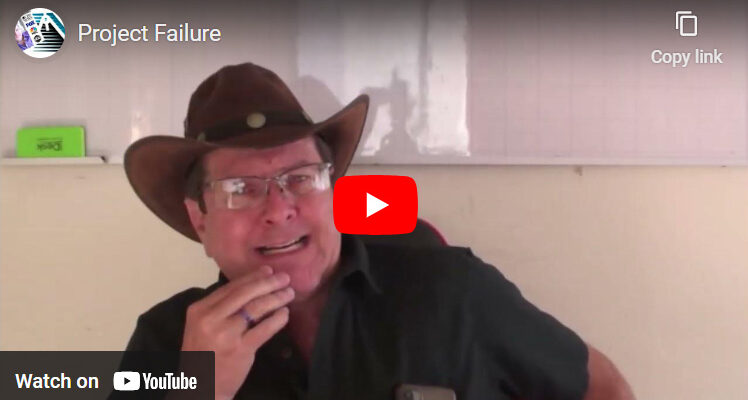Project Failure
Project failure is an outcome no one wants but many encounter. Generally, it means you probably fucked up somewhere. It often stems from a predictable yet preventable cause: cutting corners. This practice, usually driven by tight schedules, can sabotage even the best-laid plans. Let’s explore why this happens and how to avoid it.
The Domino Effect of Cutting Corners
When deadlines loom, project teams face immense pressure. To stay on track, teams might skip essential steps, like thorough planning or testing. While this approach may seem efficient in the short term, it creates vulnerabilities. These small oversights can snowball into larger issues, leading to project failure. Cutting corners NEVER works.
For instance, skipping detailed requirements analysis can result in unclear objectives. If the team starts executing without clarity, deliverables might not align with stakeholder expectations. This misalignment often surfaces late in the project, leaving little time for correction. The result? Missed deadlines, increased costs, and unmet goals.
Why Tight Schedules Tempt Teams to Cut Corners
Tight schedules amplify stress and urgency. When faced with strict deadlines, decision-makers may focus more on speed than quality. This mindset can cause teams to prioritize quick fixes over sustainable solutions. This also means you will probably get your ass fired.
Another factor is the belief that skipped steps can be addressed later. However, once these gaps are embedded, fixing them becomes increasingly challenging. Teams often lack the time or resources to revisit earlier phases, locking them into a flawed process.
Real-World Examples of Project Failure
Many high-profile projects have failed due to rushed execution and shortcuts. One example is software projects that launch without proper testing. These often result in major bugs, costly fixes, and reputational damage.
Construction projects also face similar issues. For example, skipping soil analysis or structural testing can lead to safety hazards and delays. In extreme cases, these oversights can result in catastrophic failures.
These examples highlight the risks of prioritizing deadlines over diligence. While speed is critical, ignoring foundational steps almost guarantees project failure.
How to Avoid Project Failure When Schedules Are Tight
Prioritize Effective Planning
Start by investing time in robust planning. Define objectives, identify risks, and allocate resources effectively. Clear plans can help teams work smarter, even under time constraints.
Communicate Realistic Expectations
Engage stakeholders early to set achievable deadlines. Unrealistic timelines force teams into a corner, increasing the temptation to cut corners.
Monitor Progress Rigorously
Regular progress reviews help identify gaps before they escalate. Teams should track performance against key milestones and address issues promptly.
Empower Teams to Raise Concerns
Create a culture where team members feel comfortable voicing concerns. Early warnings about potential risks can prevent costly mistakes later.
Invest in Contingency Plans
Always allocate buffer time for unforeseen delays. Having a contingency plan ensures that minor setbacks don’t derail the entire project.
The Long-Term Costs of Cutting Corners
When corners are cut, the immediate gain is often offset by long-term losses. Rework, increased costs, and damaged trust are common consequences. Worse, a failed project can tarnish reputations and erode stakeholder confidence. In short, nobody will trust a project manager that does this kind of shit.
Recovering from project failure takes more effort than doing things right the first time. Teams that prioritize thoroughness, even under pressure, are more likely to succeed.
Conclusion
Project failure frequently starts with small compromises made under tight schedules. While the pressure to deliver quickly is real, cutting corners rarely pays off. Teams must resist the urge to sacrifice quality for speed. Instead, they should focus on robust planning, effective communication, and consistent execution.
By addressing these challenges proactively, organizations can reduce the risk of project failure. The key is to balance urgency with diligence, ensuring that short-term gains don’t lead to long-term losses.
Ultimately, avoiding project failure isn’t about avoiding tight schedules, it’s about managing them wisely.
Let’s Git-R-Done this week!

